The Metamorphoses of Lara Croft
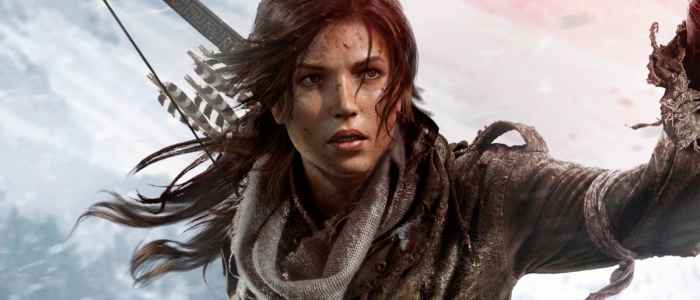
What The Naked Skin Hides
Lara Croft’s backstory is interesting, if you care to read through the manuals. Even though she was born into nobility, she chose the life of danger and adventure willingly. Lara was always been skilled archaeologist, knowledgeable in various culture and their history. She was very resourceful too. She outsmarted her enemies despite the odds, and survived till the end. She was very violent as well. One of her friends said that Lara was willing to paint the whole town red if things went badly. It was a common criticism on the character since the classic era. Sadly, not many people knew this despite the series of games where Lara Croft was the main character. To the majority of gamers and non-gamers, she was merely a faded symbol of video game sexuality.
It is true that there are other interesting female characters in the video game worlds, but Lara Croft is in very unique position for several reasons. First, Lara Croft went through multiple changes for roughly 20 years since her debut, and each changes enhanced and transformed her character. In addition to this, the change in Lara focused more and more on her personality than sexuality as the series progressed despite her being one of the most prominent sex symbols in the video game world, and these changes were widely considered successful by critics and fans. Lara Croft’s transformations and success are the testaments that female protagonists can be successful with their depths and personality.
From Tomb Raider to pre-Legend
Originally designed as Indiana Jones rip-off male adventurer, the developers of Core Design decided to change the gender of their protagonist to female in the process, and this was an excellent decision because mere change of gender made the character distinctive. After this change, the developers initially designed the character to be Latina. and named her Laura Cruz. Laura’s mission was to save the environment by collecting artifacts, but this was changed along the way. Also, the higher ups in the company asked to change the character’s ethnicity so it’s “British-friendly”. The developers modified the character’s name to Lara Croft, and made her an archaeologist from noble family (now she was very British). There was a minor “mistake” during development though. The modeler made a mistake and made the character’s breasts size bigger than it was supposed to, and the other members liked it. So this unintended “mistake” was retained.
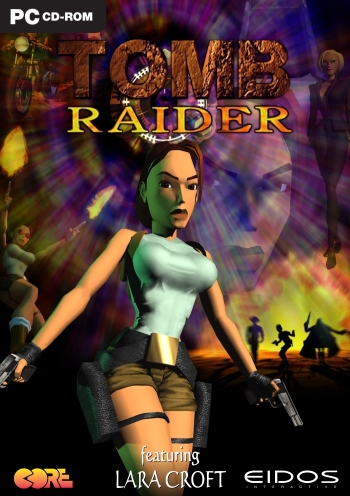
Anyway, Tomb Raider was released with Lara Croft on the cover all by herself. In 1996, that was quite a rare case. Samus Aran might be the early example of lone female protagonist (who can usually massacre the horde of bad guys) in games, but she did not show her feminine look – she hid behind the armor, and her gender was considered “secret” or “treat” for those who finished the game with good score. Even the manual referred to Samus as “he” to make her gender secret. In later games they did mention that Samus was female but still the gamers had to work to see her outside the armor. But Lara exposed her feminine look for the whole world to see, and no one could mistake that she was the sole protagonist. Considering that Naughty Dog had to struggle to keep Ellie in the cover of Last Of Us (the executives did not want to include Ellie in the cover because they thought it would drive away the male gamers), and Elizabeth was removed from the cover of Bioshock Infinite despite her prominent role in the game, Lara indeed made an impressive entrance.
The game, and the character were hit. The game was a massive success in the market, selling 7.5 million copies worldwide, and Lara Croft became one of the most iconic characters in the Video Game Pantheon. Lara became the cover model for pop culture magazine The Face in 1997, showing her appeal to the non-gamers as well. The sequel continued despite the original designer leaving the company because he was not satisfied with the sexualization of the character, and recycled the same system over and over until everything went downward spiral with Angel of Darkness. Tomb Raider franchise continued to expand as the comic book series and the movie series were made.
It is interesting to point out that the minimal personality of Lara’s character is considered one of her appeals. Richard Rouse III, in his book Game Design:Theory & Practice, explains that the gamers can imprint their personalities onto Lara because of her loosely defined personality. In this regards, Lara follows the trope of silent protagonist, such as Gordon Freeman from Half Life and Link from The Legend of Zelda. These characters are widely praised for the high level of immersion, though many critics found that the silent protagonists have little character development.
Sex Appeal was one of the reasons for Lara’s popularity for sure. Lara was occasionally featured as sexiest character in video game by several video game magazines such as Play and Play Station: Official Magazine. Yet Lara Croft was considered culturally important because she was one of rare female protagonist in mid-90’s. But when other games started to feature sexually attractive female characters as well, sexuality as Lara’s advantage was not as effective as before especially when the sequels failed to continue the success of their predecessors. In this regard, transformation for Lara Croft was necessary for her survival.
Interestingly, Classic style Lara Croft is still around, unlike other rebooted instances where the old versions were neglected. Old-School Lara with twin pistols can be seen in Lara Croft and the Guardian of Light (which started the development around the same time as the reboot), its sequel, and the comicbook miniseries, as well the highly acclaimed mobile game Lara Croft Go. In a way, Lara Croft of all versions are appealing to the modern audiences, though the company focuses on the reboot at the moment.
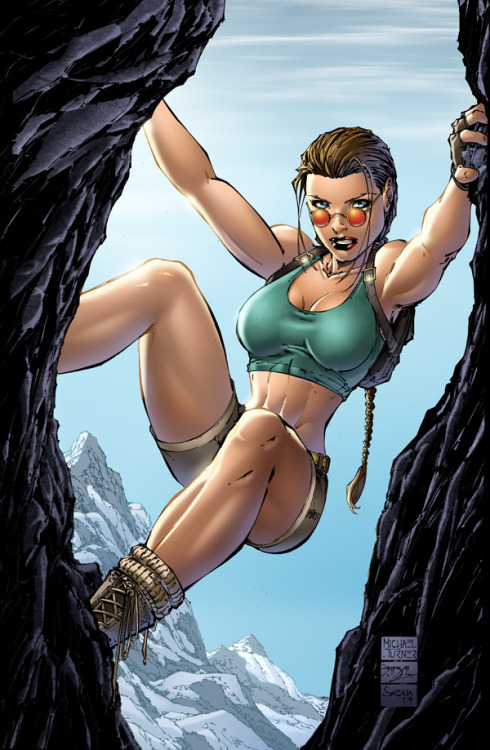
Legend Trilogy And Stepping Into Darkness
After the failure of Angel of Darkness, Crystal Dynamics took over and developed Tomb Raider Legend. The control was different, and Lara looked different too. Although her proportion was still unrealistic, Lara’s breasts size was reduced and looked less exaggerated. Yet, it was still easy to recognize this version of Lara as a continuation of previous Lara.
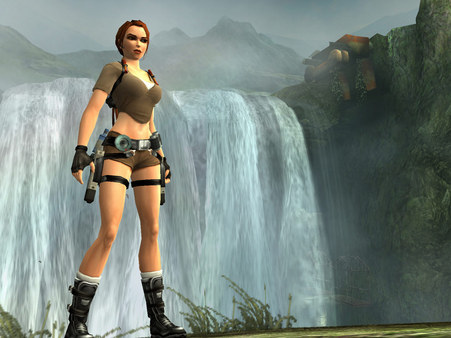
Crystal Dynamics also put more effort to the storytelling and character development. The classic Lara was originally a noble woman who was changed after surviving the airplane crash; she abandoned her engagement to other nobility and started to travel, which angered her parents who disinherited her. This Lara made money by writing, and even when she managed to inherit her family’s wealth, she spent more time adventuring and raiding tombs than managing her estate. However the gamers could not know this unless they read through the manuals. Lara’s backstory changed a bit throughout the series’ development, and the movie version made very important change. Now Lara’s father played important role in her obsession and motivation. Instead of being a thrill-seeker, Lara became the woman driven by the family tragedy to find the truth. Crystal Dynamics modified this story in Legend. Here, child Lara and her mother were stranded in snowy mountain when their plane was crashed, and Lara’s mother disappeared in mysterious way. She managed to survive but the disappearance of Lady Croft drove Lara’s father into searching for mystical artifacts which was seen as a lunacy. Legend took the old formula that was buried in the background and used it to enhance Lara’s character. And it was the first game in series to feature Lara in bikini. This bonus outfit was available after beating games in certain difficulty.
Legend’s Lara was also one of the most optimistic and lively version in the series. When Lara encountered an old temple in the game, she exclaims that she was “falling in love” again. In other instance, Lara joked that even if everything failed, she could get into a postcard business. Lara interacted with other characters constantly in this game, and showed her sense of humor and fascination in the ancient civilizations she explored. In this game, the gamers could vividly see that Lara loved all the ancient artifacts and structures she encountered in her exploration.
In the end of the game, Lara learned of the truth regarding her mother’s disappearance, and reacted emotionally when the villain of the story mocked her. This was an interesting departure from the previous depiction of Lara Croft in games. Lara was usually depicted as cool-headed character but rarely showed much emotion within the game.
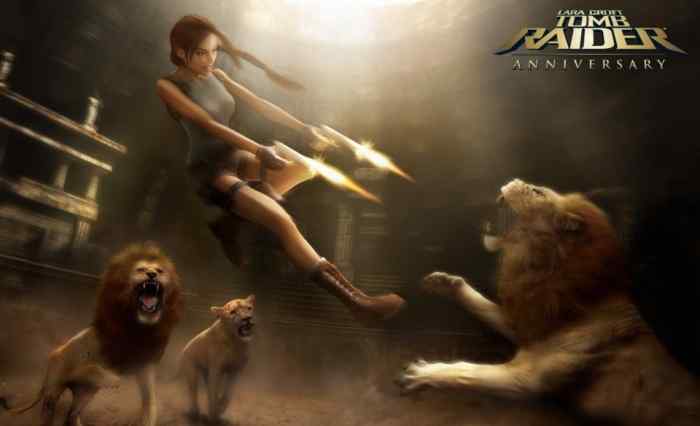
Legend‘s sequel and remake of the first game, Tomb Raider Anniversary, attempted to further develop Lara’s character. In this game, Lara was back in her first adventure, but with few changes. She had never killed a person before, and unlike in the original game where she showed no remorse, Lara was shocked after killing a villain with her own hands. This game was noticeable in violent deaths; in many QTE events, the failure led to gruesome deaths for Lara, including getting her head torn off by dinosaurs or being shot in the head (of course, graphic violence was not depicted but it was strongly implied). Such level of violent description was present in the original game (including being eaten alive by T-Rex) but the games between the original and Anniversary tended to ignore that. The antagonists attacked Lara not only with guns, but with psychology as well. The antagonists mocked her by belittling her purpose, and Lara had to steel herself to fight such psychological attacks. In such way, Anniversary was further step to darker and gritty depiction of the character.

Tomb Raider Underworld in 2008 was in many ways the precursor to the reboot. Lara’s look was more refined, and she could be dirtied when adventuring in various locations. The game took darker turn as Lara’s colleague was murdered by her Doppelganger, and her mansion being destroyed. Lara became more vengeful, and naturally merciless. She used her Doppelganger into killing the woman who ordered the murder of her friend, calling the Doppelganger her instrument of revenge. Underworld turned Lara’s character from lighthearted thrill-seeker into a serious and dangerous character. Now Lara’s adventures could cause major damage to those around her, and she would do whatever it took to ensure that her enemies suffer and die.
Although Underworld managed to be commercially successful despite its initial struggle in the market, Eidos Interactive was bought by Square Enix in 2009. In 2010, Square Enix announced that the sequel for Tomb Raider franchise had been in development for 2 years, and told the fans worldwide that the new Tomb Raider would be completely different.
Reboot And The Loss Of Innocence
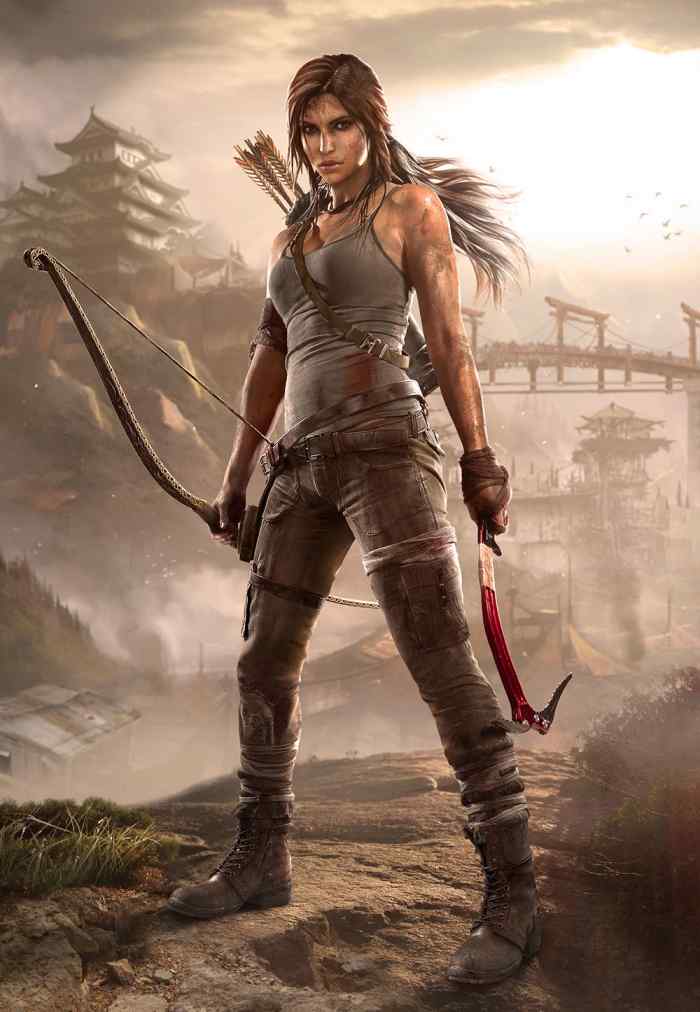
When the reboot of Tomb Raider was announced (developed by Crystal Dynamics again), it was drastic departure from the previous games. Featuring young Lara Croft in early 20’s, the game told of her first adventure. But the moment the gamers saw the trailer for the first time, they knew this was not Tomb Raider they knew. It was dark, bloody, and horrifying. It was the first game in the series to receive M rating.
Many people were shocked with the gruesome violence and dark depiction. Lara was no longer unrealistically glamorous and confident adventurer, but scared young woman who struggled to survive in mysterious island. The game’s concept was survival, and Lara went through many ordeals and fought her ways out to survive. The game raised much criticisms regarding one scene which seemed to be a rape attempt on Lara, and including shocking death scenes such as Lara being crushed by rocks or having her throat impaled by sharp pipe. Death scenes were included in previous Tomb Raider games, but the realistic and horrific depictions such as in the reboot was never seen before in the series. Even if she managed to survive such encounters, Lara suffered many hardships including her stomach being penetrated by piece of metal, surviving supernatural threats, and other stressful encounters like the death of her friends. But Lara fought back; she mowed down legion of the religious fanatics after recovering from the initial shock, and the villains fled from Lara shouting “she will kill us all!”
Some fans might wonder if such change was necessary for Lara Croft. After all, Lara was among the most recognizable characters among the video game fans and characters like Mario continued to maintain popularity despite the little changes made with the character. But Lara was a different case. Her status as sex symbol placed her under controversy often so significant amount of transformation to Lara Croft could improve her public image. Sexuality in games received more criticism than in the past. Games like Bayonetta, which was released in 2009, became the focal point of controversy because of its highly sexualized character design. This reproach to highly sexualized female characters continued. The modification made to the introductory cutscenes of Street Fighter V and Koei Tecmo’s decision to not import Dead Or Alive Extreme 3 to North America are examples of today’s audiences’ distaste to oversexualized female characters in games (both controversies occurred in 2015). Tomb Raider was released in 2013, showing that the developers were aware of this ongoing trend. It was clear that using the classical style Lara Croft would not work well with the modern audience.
The series was not a stranger with changes, but Crystal Dynamics ensured that this Lara looked clearly different from the previous Lara. It is interesting to note that the new Lara no longer possess any of her old trade marks, such as twin pistols or hot pants or backpacks. Yet, she managed to consolidate the new images to the gamers across the world, and now considered as a character with her own identity. Lara’s attitude was different too. Instead of lighthearted and confident approaches, young Lara was visibly shaken by the turn of the events, and rarely joked with her friends. But the biggest change of all would be lack of sexualization; Crystal Dynamics (who were the first to make Lara in bikini playable) stated that Lara in the reboot series would not be depicted in such ways, and they kept their words. None of Lara’s costumes reveal much skin, and her proportions were more realistic.
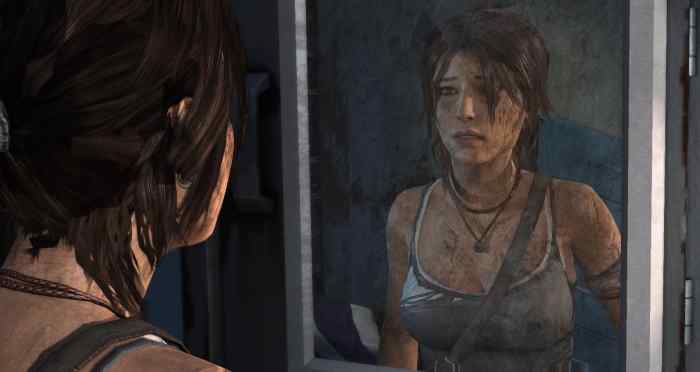
But it would be a mistake to assume that the reboot Lara abandoned everything from the previous games. In fact, this Lara showed many traits that were present in the old games. Reboot Lara was studious woman with knowledge in archaeology, persistent, self-sufficient (it was mentioned in the game that Lara paid her own tuition by working part time), and brutal. Lara massacred hundreds of villains in this game, and the final boss reminded Lara of her own acts of violence. He excused his own killings as the act of survival, and said Lara was no different. Such psychological attack was seen in Anniversary, but the reboot made it more dramatic because the game focused on Lara’s change or “fall” throughout the game. Even the game called the Lara model from beginning of the game “Innocent Lara” and later Lara “Survivor Lara”. The game ended with the phrase “A Survivor is born”, signifying that the metamorphoses was complete.
The reboot continued with Underworld’s dark interpretation of Lara and went few steps further. Lara’s murder was no longer simple action scene but gruesome act that affected her and those around her, and this change was empowering and horrible at the same time. While Lara was no longer terrified of the dangers that threatened her, now she no longer hesitated to take someone else’s life.
The developers took everything that was appealing and interesting about Lara’s character and showed them for the whole world to see. Lara’s psychology was deeply explored through her constant monologues throughout the game, and without distraction of sexualized modelling, it was easier for the gamers to take her situation more seriously. In many ways, the Reboot Tomb Raider was a product of its time. Many games focused on the character development and darker story, and Tomb Raider followed the trend. But it should be noted that Tomb Raider was one of more successful attempts. Lara was still intelligent, persistent, violent, and attractive despite the removal of sexualized depictions. Perhaps, Lara had to be de-sexualized to show that she had other qualities worth noting. Lara Croft’s character was widely controversial because of her sexualized characteristics; as Zoe Flower from 1Up.com described in her article, Lara “continues to personify an ongoing culture clash over gender, sexuality, empowerment, and objectification.” Once the primary source of the controversy (sexualization) was removed, Lara presented a different picture to the audiences.
The game sold 1 million copies within 48 hours of its release, which was the biggest sales number in the series. It was a blow to those who believed that the female characters could not draw audiences without showing skins. Some might believe that it was the brand name of “Lara Croft” that led to success. But many reboots such as Syndicate, received mixed or negative receptions from the critics and the fans alike. In order to make the reboot successful, relying on the series’ popularity is not enough.
Rise Of Lara Croft
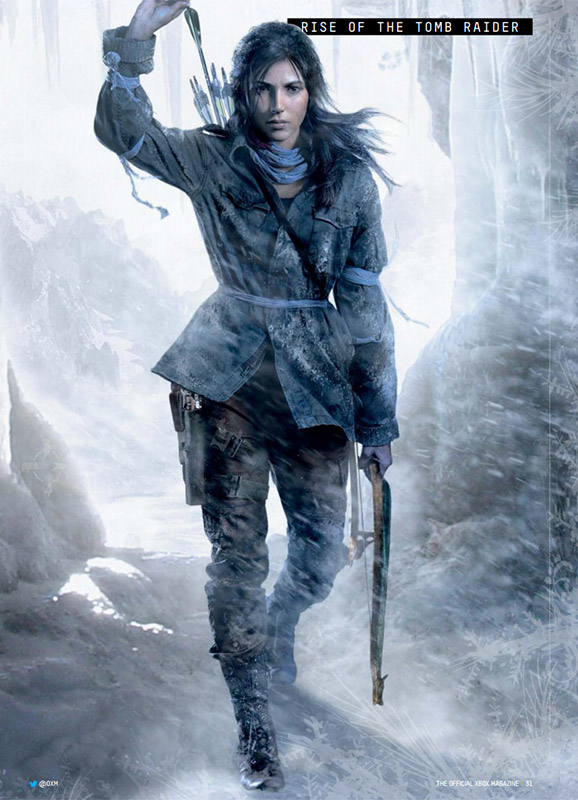
2015’s Rise Of The Tomb Raider continued Lara Croft’s adventure in the similar light. Set after the series of comic series written by Gail Simone, Rise told the story of Lara seeking the secret her father was trying to uncover. Although less bloody than the previous game, Rise still retained the dark and mysterious tone. Lara was now experienced survivor who could assess the situation clearly despite severe natural threats, and showed even intelligence through her language skills (Lara interprets Medieval Mongol, Greek, and Russian in this game) and archaeological knowledge. Such resourcefulness was mixed with more level-headed attitude and made her look experienced adventurer. For example, early in the game when Lara is lost in the snowy mountain, she does not panic and carefully assesses the surrounding to make fire. When Lara discovers the dead deer in the process, she coolly remarks that it was a fresh kill instead of panicking like in the previous game. Her calm demeanor is constantly portrayed throughout the game through her monologue, and the gamers can easily see that Lara is a brave and tough woman who can survive any danger.
Crystal Dynamics understood who Lara Croft was, and decided to show what made her truly interesting. Whatever was hidden behind busty body and naked skins, Crystal Dynamics pulled them out and revealed to the whole world. They showed that Lara Croft was interesting and attractive character even without overt sex appeal. The qualities hidden and ignored were now emphasized.
However, the Reboot Lara is not immune from criticism. Video game critic Ben “Yahtzee” Croshaw pointed out that Rise’s Lara seems “helpless to stop herself” as she continuously tells herself that she “got to do” what she has to do. The problem is that while Lara sets out for adventure on her own volition according to the plot, such little dialogues make it sounds like Lara is forcing herself to do what she does not want to do. Look back at Tomb Raider Legend. Legend‘s Lara was full of passion and appreciation for the environment and even dangers she was into. It was obvious from Legend‘s Lara’s voice that she was loving every second of her adventure, unlike the Reboot Lara who rarely laughs or show much appreciation of her surroundings. Reboot Lara does sound mystified with what she sees, but does not show much love.
There was another criticism from Gamespot that Lara Croft in reboot was interchangeable with other video game heroes. In addition to this, the same staff criticized the dissonance between the storytelling and the gameplay; while the developers made Lara’s first kill significant with long event, the game does not let kills create “psychological barrier”, but rewards the gamers for it. Such dissonances create contradiction in character which was not present in the old games. The next game in the series should try to resolve such disharmony to make the character more complete.
Despite the criticisms, the Reboot Lara’s popularity cannot be denied. The recreated version of Lara struck the right code in today’s video game fandom. There were many recent attempts to focus on the female characters who did not rely on sex appeal such as Bioshock Infinite and Last of Us, and now Lara Croft, once one of the most sexualized characters, joins the wave. Tomb Raider‘s success is significant because it is one of few franchises that focused solely on the female protagonist since the beginning of the series. Many executives are unwilling to fund the projects that do not feature masculine male characters or sexualized female characters. Life is Strange struggled to find a support because its protagonist was an ordinary looking teenager girl, and many publishers found it unattractive except Square Enix, which was also the publisher for Tomb Raider. Reboot Lara Croft’s success could ignite the wave of diverse protagonists in games; once the developers and publishers realize that de-sexualized female protagonist could sell, they would be more willing to try different characters and this change could lead to wider appeal to the diverse audiences.
All of these might be hopeful dreams, but one thing is clear:
Lara Croft will continue to mesmerize the gamers with the adventures, just like she did 20 years ago.
Works Cited
Tomb Raider: PC Manual. Core Design 1996
Dave Gibbon, “Q&A: The Man Who Made Lara”. BBC News. Last Modified June 21st 2001. http://news.bbc.co.uk/2/hi/entertainment/1410480.stm
Rus McLaughin, “IGN Presents: The History Of Tomb Raider” ign.com Last Modified Feb 29th 2008. http://ca.ign.com/articles/2008/03/01/ign-presents-the-history-of-tomb-raider
Paul Tassi, “With ‘Rise of the Tomb Raider’, The De-Objectification of Lara Croft is complete” Forbes, Last Modified Nov 9th 2015. http://www.forbes.com/sites/insertcoin/2015/11/09/with-rise-of-the-tomb-raider-the-complete-de-objectification-of-lara-croft-is-complete/
Ben Croshaw, “Rise Of The Tomb Raider Feels Like A Second Origin Story”, Escapist Magazine, Last modified Dec 1st 2015 http://www.escapistmagazine.com/articles/view/video-games/columns/extra-punctuation/15083-The-Problems-With-Rise-of-the-Tomb-Raider
“Why Tomb Raider Failed as a Reboot”, Gamespot, Last modified April 7th 2013. http://www.gamespot.com/articles/why-tomb-raider-failed-as-a-reboot/1100-6406449/
Richard Rouse. “Storytelling”. Game Design: Theory and Practice (2nd ed.). Wordware Publishing. pp. 218–219
Brian Szabelski. “Good Idea, Bad Idea: The silent protagonist” The Destructoid. Last Modified Feb. 10th 2008. http://www.destructoid.com/good-idea-bad-idea-the-silent-protagonist-69307.phtml
Zoe Flower. “Getting the Girl” 1up.com Last modified Jan 9th 2005. http://www.1up.com/do/feature?pager.offset=0&cId=3137700
Carol Pinchefsky. “A Feminist Reviews Tomb Raider’s Lara Croft” Forbes. Last Modified Mar 12th 2013. http://www.forbes.com/sites/carolpinchefsky/2013/03/12/a-feminist-reviews-tomb-raiders-lara-croft/
What do you think? Leave a comment.
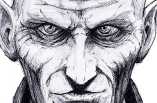



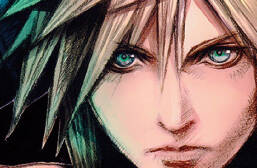
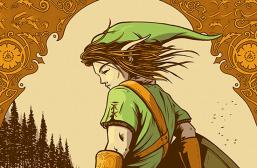
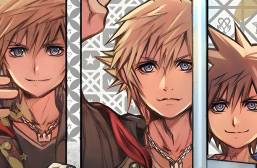
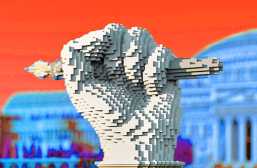
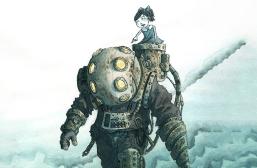


This article has gone through several “metamorphoses” of its own and I am so happy to see that it has become the comprehensive history of the character and character backstory that Lara Croft deserves! Thank you!
I’m a bit gutted, I was hoping the last one (which was a fun and well put together, but also generic and fairly charm-free action adventure) would be used to get the series popular and then this one would go back to the actual raiding of tombs, whole levels that took the breath away and were like one big puzzle. Sadly it once again sounds like Uncharted: Lara Croft. The tombs shouldn’t be asides, they should be the main event. Gah. I miss the old Tomb Raider games.
Laura Croft, now fully two-dimensional.
The orginal Tomb Raider and Doom are the only games I ever finished. I loved Tomb Raider and got totally hooked. After that every other game seemed a bit rubbish. I actually put it on the other day and had a go on it and that sound of her running through the cave at the beginning took me back.
I always thought of her as an android, a sort of Blade Runner figure.
Anyone remember the ‘naked Lara’ cheat code rumour that did the rounds when the first game was out?
I vaguely remember that. I also remember a cheat where you could make her explode into several pieces.
Yes, the reality was a Nude Raider patch that could be applied to the PC version.
Great article. I’ve been a fan of Tomb Raider since it came out in 1996 and the metamorphosis of the series has made me happy, sad, and angry at different times. Lara has almost become more of an “ideal” than a character in some ways, in that as long as there is still a semblance of her original character, it still works. They softened her up quite a bit in the Legend series, then gave her an origins story in the new series, so she has certainly gone through some transformative personalities over the decades.
On a side note, I will never let go of the fact of the unfortunate train wreck that is AoD. It was poorly produced and unfinished, but I still loved it. I always wanted more Kurtis. *sniffle*
Really fascinating article. I’m not all that familiar with Lara Croft as a video game figure, mostly as the film character. What I’m really interested in is the fact that she was originally a Latina character and was changed into a “British-friendly,” Euro-centric figure. I’m also very curious about the increase in women-performed violence (and violence in general) and the development of her personality as it correlates with success or failure of the game launches.
Great work. It really is interesting that, though it seems odd, even today it’s considered controversial to have a sole female protagonist. However, you bring up a great point with the struggles Life is Strange faced before Square Enix picked it up. This is true outside of video games as well with the sparsity of well-made and well-received female superhero movies (shows fare slightly better) and times when networks feared having a female character as a lead would make the narrative inaccessible to young boys (i.e Legend of Korra). Lara Croft definitely plays a role in this discussion.
Also, I just remembered Oban Star-Racers. It was an excellent mini-series with only one female character who happened to be the protagonist. It took so long to be shown because so many people the creator went to wanted the main character to be made male, but the creator was adamant on not changing Eva’s gender.
I love Lara Croft and Tomb Raider, this was such a great article to read and I’m so happy that you went through so many phases of who she is as a character, really enjoyed that aspect!
her character development in the last one was odd to say the least
I was never a TR fan, although my ex loved her and certainly holds her up as a feminist icon – at least within the (still, desperately) chauvinist world of computer games. The point was that Lara was powerful. Instead of female characters being things to rescue, she was just a kick-ass hero. It gave girls who identified with her a chance to be a kick-ass hero.
I’m loving how much more REAL Lara feels now.
She gets covered in mud, she gets drenched by the rain, she bleeds, she gets injured by the environment which affects her movement.
This is no longer a swan-diving, side-jumping, infinite-ammo, auto-lock-on 3rd person adventure game anymore.
They’ve really added a fantastic survival element to it.
See, I loved that stuff in the previous games…that’s what made them great fun for me. I’m worried I’m won’t gel with the new style, especially as I’ve never enjoyed survival-type games.
Why do female characters always have to be made ‘vulnerable’?
I been really dim but it never crossed my mind before that as a male I was playing a female character in Laura Croft, the gender didn’t matter.
On reflection, to me at least, it just shows how gooxd the original Tomb Raider games were.
I miss the days of walking to the edge of a drop, jumping back and executing a run, jump, grab combo. Bizarre game mechanics but they worked and made the whole game like an interactive puzzle.
As I child I used to bite and throw my controller across the room every time I failed to make a jump. It was so frustrating! I was convinced Lara was doing it on purpose. But even as a 7 year old I appreciated the ominous tension those games brought. Just standing at the edge of a drop would make you sweat, because one small slip would mean starting all over again in most cases. Games today don’t bring that to the fore enough.
The graphics decided that she be more realistic, but I think the chances of keeping the tongue-in-cleavage humourous tone of the original (bear-attacks aside) were low as Assassins creed has been very successful and it had to be darker.
Why does every female character who shows any strength have to be boringly cast as a feminist?
Tomb Raider was without doubt a bona-fide classic game. Standing on the huge Sphinx, as the camera pans out and around was breathtaking. The eerie, empty level design was fantastic. Tomb Raider 2 was massive fun, and a real challenge. After that, it all started going a bit downhill – but I’ve played pretty much all of the Tomb Raider games to the end…
The new Tomb Raider is obsurdly beautiful, the new Lara, whilst being ridiculously gorgeous now and alot better…portioned…she’s a far more believable and relateable character.
I’m quite curious about the reboots, but i’m afraid it has put more of an emphasis on action rather than exploration. That’s what i liked about the first one, huge lonely tombs with the odd endangered animal to kill. Pierre was about the only human in it. I was always disappointed they they brought in more humans to kill as the series progressed, it really lost that isolating atmosphere.
The WHOLE POINT of Lara Croft is that she IS an adolescent fantasy.
The new game is trying to make Lara more realistic and sympathetic, but by doing so it looks like they’re taking away the very things that made her cool and popular in the first place. And I’m not just talking about her chest.
The new Lara Croft appears to have fallen into the currently fashionable trap of turning breezy entertainments into a very dark, adult realism, as though we need to be lectured about escapist heroes being fundamentally insane to endure all the action and violence they go through. I’m not saying that, for instance, Nolan’s Batman films are bad, but they are a sort of trend-maker in this new find-the-darkness malarkey.
The real successor of Tomb Raider is really the Uncharted series.
Very insightful article and comment, and I agree that the current trend for dark ‘n’ gritty seems to have pervaded everything…
The entertainment is getting darker by the day, not only in games but pretty much everything else…. like movies or pop songs
I’d love it as if us as consumers stopped buying those dark disturbed forms of entertainment to force the producers catering for a different market where entertainment is more entertaining and less psychotic.
I find the whole find-your-darkness-narrative actually quite boring now.
Lara Croft is a special character because for a long, long time she was the only example, and is still today by far the best known example, of a female character who gets to kick exactly as much ass as the best male lead. She has as much emotional fragility as Indiana Jones, or Bruce Willis in Die Hard.
Interesting article! I liked that you went through character background. It has convinced me to start playing her game.
There are a couple places in this article where I believe you start to go -off topic, but otherwise pretty well put together.
Something else that might be interesting to make note of: unlike a lot of shooter-type and adventure games–which are played in first-person mode, the Tomb Raider games are third person. In first-person games, the player assumes the role of the main character, but in games like Tomb Raider, the player is separated from the character and does not see through their eyes. In this manner, Lara essentially becomes an object that that the player gets to toy-around with. And since video games were largely marked exclusively to boys during Tomb Raider’s release, it comes as no surprise that the ability to look at Lara’s rear the whole game was a selling point.
when I first read this article that’s when I wanted to play the game it look so interesting and the details look so realistic
Great article! I think not only that Lara Croft is a terrific game, but that it is equally a significant game in our progressive culture.
Really interesting article showing the evolution of the series. While I never played the original games unfortunately, I did play the reboot and do intend to pick up the sequel as soon as possible. What struck me most notably about the reboot is how quickly Lara went from innocent to survivor. I believe the gamespot article points this out how this dissonance to some extent. Now granted this can be explained away by player skill or what have you but I feel any attempts to do this would be disingenuous at best. This dissonance is there, though I do not know if this is actually a flaw or not. Go through the various campfire dialogues of the original game, Lara seems to be very focused on the goals she has to achieve and the immediate concerns of her group. I think this is more of a coping mechanism than anything else, for if she were to reflect on the damage she was doing to her opposition during her predicament in the game she would have likely not have been able to handle the guilt thus putting her in an emotional state where she wouldn’t be able to properly deal with the obstacles in her way. I feel this is best exemplified in the contrast by her reaction to the first man she killed compared with the man that gets trapped under rubble while she is approaching the radio tower. The former she treats with pity and remorse whilst the latter regardless of choice she treats coldly showing him no respect. And while this mindset is effective in dealing with this dangerous scenarios she encounters, it suppresses the natural feelings of remorse and regret that comes of preforming such actions, laying waste to her humanity in manner of speaking. Having not played the most recent game I am curious to see if the sequel continues this theme or this disharmony merely proves to be simple ludonarrative dissonance and nothing more.
I’m about a quarter of the way through the sequel, and I think it will be interesting to see her character development. It seemed odd to me though that she treats Jonah so coldly after everything that they went through in Tomb Raider.
This was such a great read. I was just introduced to Lara through the new game series and graphic novels. It’s interesting to see her evolution through the years.
A really comprehensive article about a strong character who I’m not all that familiar with. While the video game series may have undergone many reboots, one thing I am eagerly waiting for is a reboot to the Lara Croft film series especially since the 2 installments so far can be safely considered to be lackluster at best and do not do justice to the character at all.
there is a tomb raider movie in the works starring Alicia Vikander and is set for release in 2018, but it is based in the 2013 reboot so i am rather hesitant about it.
It’s interesting to see different variations of Lara Croft since the 1990s. The earlier games are nostalgic due to the influence of the ’90s/2000s. The reboot games are grittier and serious. The films go through the same changes as well. The Angelina Jolie versions are cheesy and entertaining, while the one with Alicia Vikander is more serious
I admit I haven’t seen anything past TR 2 but I’m not sure I want to. My young son got me into the game, as well as GTA Vice City and San Andreas (my true love!) and I see Lara as fitting into that genre, rather than some pensive, Rick Deckard’s sister who needs redemption or some other psychological awakening. Let’s save that for BBC’s Sherlock, eh? I loved the game play in the first two TR’s, even though I was often so slow, I had to hand the controller to my son!
Yet I still remember those cavernous tombs, the room filling up with crystal clear water, diving and executing by accident Lara’s first handstand on top of a ledge. I don’t see the new one as “feminist” or even that interesting, any more than I wanted to watch Carl “C.J.” Johnson as a crusader for the rights of Blacks in L.A….I mean Los Santos! To paraphrase Crash Davis in “Bull Durham”, “It’s a game! We’re supposed to have fun!”
I thoroughly appreciate the character of Lara in the reboots, but I don’t think the plot and characters are memorable enough to fully draw out Lara’s strengths.
I had never played a Tomb Raider game before this new trilogy (although I did see the Angelina Jolie movies, so take that as you will). After having played the final entry in this new trilogy, Shadow of the Tomb Raider, I have conflicting opinions about the trilogy as a whole. On the one hand, I loved all the mythological and archaeological aspects of these games; my favorite part was searching for all the artifacts and documents in every game to get the deeper lore of the world, and the level designs of all three games just blew me away. And the stories of the first two games specifically were exactly what the Indiana Jones fan in me wanted. But while I of course sympathized with Lara in the first game as being forced into doing awful things in order to survive, she became less and less sympathetic to me in the following games. In Shadow specifically (SPOILERS), I remember a point where Lara thinks that her friend Jonah is dead, and we’re supposed to feel sympathy for her as she immediately grabs a machine gun and proceeds to mercilessly mow down around 30 Trinity mercenaries and a helicopter at an oil field. I just remember feeling no connection to Lara when this happened, and by the end of the story I was more finishing the game to see how the overall story ended rather than an interest a wrap-up of Lara’s character arc. Overall, it’s a great series (but not prefect), and in my opinion one of the best reboots in video games ever.
A good essay. I always enjoy reading how characters go through a transformation.